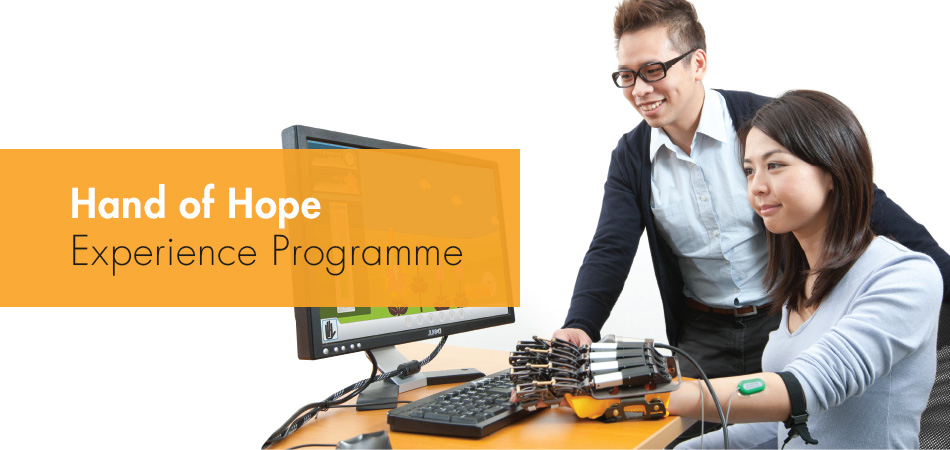How hand of hope can help you in stroke rehabilitation?
Stroke rehabilitation is quite demanding during recovery, but Hand of Hope, a highly developed state of the art rehabilitation device uses the theory of neuroscience to re-establish movement to a paralyzed hand. The robotic hand restores movement to the hand in stroke patients by encouraging them to use their own muscle signals to learn to use the affected hand once again. It is a portable and wearable apparatus that uses superior technology to help patients begin moving their damaged muscles independently as well as control their movements. Hand of Hope was precisely developed to assist coordination, muscle relaxation, and overall motor control for people afflicted by stroke.
The hand brace must be worn on the upper surface of the damaged hand with two surface sensors fastened to the flexor and extensor arm muscles to sense the sEMG or surface electromyographic signals for active involvement during work out. The sEMG signals enable the patient to picturize muscle movement according to the signals sent by the sEMG electrodes.
During training, patients wear the robotic hand on their impaired hand and have two EMG sensors attached to the extensor and flexor muscles. Electromyography (EMG) is a technique used to spot the electrical capability produced by muscle cells during activity. In a medical backdrop, the procedure is used to evaluate the biomechanics of movement and to detect neuromuscular disorders.
Stroke rehabilitation normally necessitates rhythmic movements that aid the brain to reconnect neurological corridors and restore motor function. Hand of Hope makes it possible for the patient to relearn the desired motor movements. The robotic hand supervises the affected muscles but doesn't push them to move. The patient himself starts the movement through EMG signals. This technique manages the data and forwards it to a motor on the robotic hand to help begin movement. The whole procedure happens in the twinkling of an eye. Due to the regular exercises using the Hand of Hope, the stroke patients can perform normal daily actions like opening, holding, picking, etc.
Hand of Hope has been created for people suffering a stroke to enable motor control, muscle relaxation, and coordination. The total arrangement comes with a variety of interactive games intended for training development. The games are fashioned in such a manner as to help with precise activities like grasping, arm training, and hand opening. The complexity of the games increases at every level and the advanced levels necessitate patients to move their arm according to the game.
Stroke rehabilitation
Rehab-Robotics is committed to develop the most innovative and advanced technology for rehabilitation. In partnership with the Hong Kong Polytechnic University, we developed the “Hand of Hope” rehabilitation system.Combining advances in robotics and neuroscience, Hand of Hope can speed up stroke rehabilitation progress and help patients to regain hand mobility.
The goal of stroke rehabilitationis to help patients relearn the skills lost after stroke. Active participation in repetitive hand exercise is important for stroke rehabilitation training. Researches shown that stroke patients actively involved in functional tasks can promote brain neuroplasticity. The brain is able to rewire the neurological pathway of motor function and the patients can gradually restore their hand function. The functional recovery of hemiparetic limbs can occur and the recovery process can continue even years after the brain injury.
“Hand of Hope” is activated by stroke patient’s self-initiated movement, recognized via surface electromyography (EMG) electrodes located on the affected forearm. The hand brace assists the patients to move their affected hand. Through repetitive training and active participation, patients can relearn how to move their hand for daily activities and achieve the goal of stroke rehabilitation.
News
Gerontech and Innovation Roadshow – North District
Venue: Wo Hing Community Hall, Fanling

